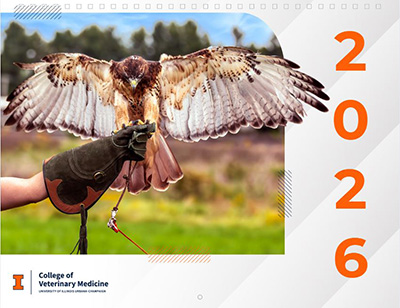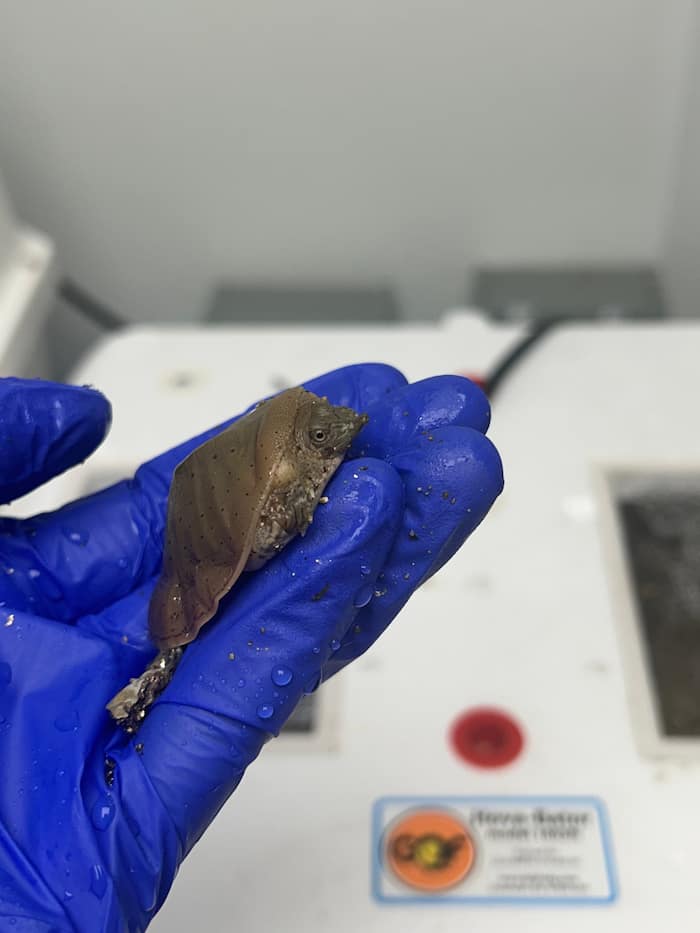By: Monika Liszka, University of Illinois College of Veterinary Medicine Class of 2022
In 2018, the Wildlife Medical Clinic cared for 33 turtles, including Eastern box turtles, red-eared sliders, painted turtles, Northern map turtles, river cooters, and snapping turtles.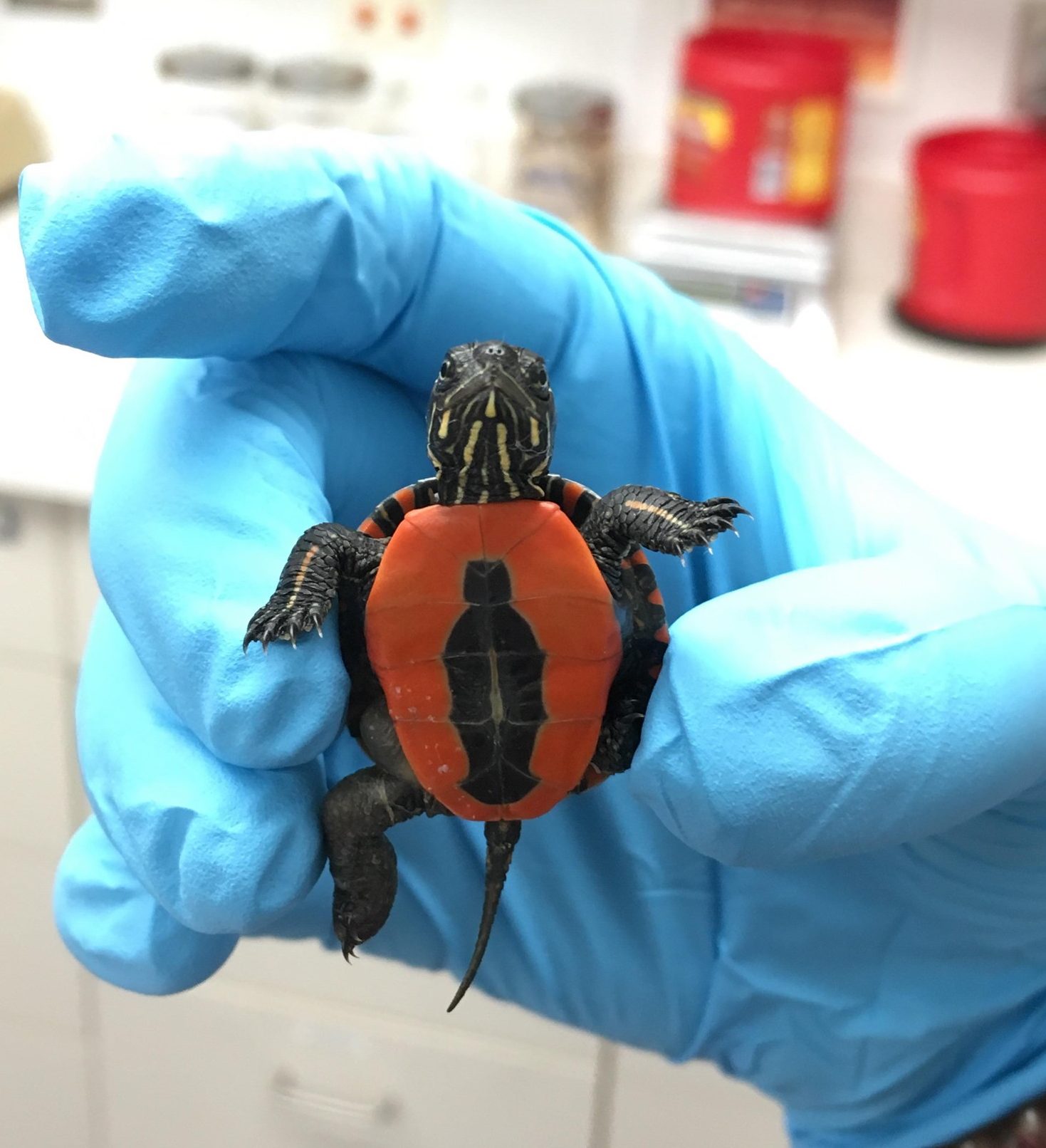 As the spring weather brings warmer temperatures, the Wildlife Medical Clinic sees a noticeable increase in turtle patients. This isn’t surprising, as these animals had been bromating (hibernating) throughout the colder months and are now becoming active again. Unfortunately, many of these patients arrive at the Clinic injured after being hit by a car. You might think to yourself, why would a turtle leave a nice pond and try to cross a busy street?
As the spring weather brings warmer temperatures, the Wildlife Medical Clinic sees a noticeable increase in turtle patients. This isn’t surprising, as these animals had been bromating (hibernating) throughout the colder months and are now becoming active again. Unfortunately, many of these patients arrive at the Clinic injured after being hit by a car. You might think to yourself, why would a turtle leave a nice pond and try to cross a busy street?
Turtles are more active than you may realize and often have a home range that encompasses more than one pond. Sometimes they are moving to different areas to mate or lay eggs. These turtles are usually perfectly healthy and are just crossing the road to get to their destination. Some species of turtles will wander far from water and it may be difficult to figure out where exactly where their home pond is located.
In other cases, these turtles aren’t feeling their best. 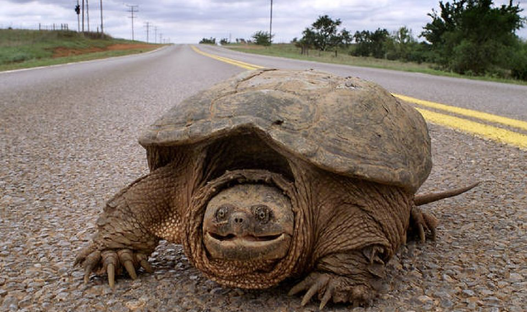 Just like us, turtles respond to being sick by having a fever. The difference is that turtles’ bodies don’t thermoregulate internally; instead they rely on the sun’s warmth to create what is known as a behavioral fever. Turtles that aren’t feeling well or that get too cold will lay in places that the sun heats throughout the day, such as rocks at the edge of a river or the hot asphalt of a road, in order to increase their body temperature.
Just like us, turtles respond to being sick by having a fever. The difference is that turtles’ bodies don’t thermoregulate internally; instead they rely on the sun’s warmth to create what is known as a behavioral fever. Turtles that aren’t feeling well or that get too cold will lay in places that the sun heats throughout the day, such as rocks at the edge of a river or the hot asphalt of a road, in order to increase their body temperature.
What to do if you find a turtle in a road:
Be cautious when attempting to help wildlife. A busy road has hazards to turtles but also to yourself. If you find a turtle in the middle of the road, make sure it is safe for you to assist before intervening.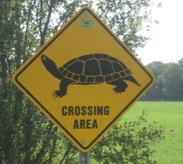 When approaching a wild turtle, avoid touching them around the front or sides of the shell in order to avoid being bit. This is particularly important with snapping turtles! To move a turtle off the road, firmly grip the top of their shell near their back feet and keep them low to the ground in case they wiggle free. You can then relocate them to the side of the road, taking care to point them in the direction they were headed to help them on their way. Turtles are stubborn creatures, so if they decide they want to go somewhere there’s almost nothing that will convince them otherwise. If you find a turtle that is injured or hit by a car, you can carefully put them in a box or bin and bring them to the University of Illinois Wildlife Medical Clinic or contact a licensed wildlife rehabilitator for help. Turtles are important members of their ecosystem – in order to conserve these species for years to come, it is important to keep wild turtles in their natural habitat and never take one home as a pet. Similarly, if a turtle has been kept as a pet, it is important not to release them to the wild as they will not have the skills to survive and could pose health risks to the population.
When approaching a wild turtle, avoid touching them around the front or sides of the shell in order to avoid being bit. This is particularly important with snapping turtles! To move a turtle off the road, firmly grip the top of their shell near their back feet and keep them low to the ground in case they wiggle free. You can then relocate them to the side of the road, taking care to point them in the direction they were headed to help them on their way. Turtles are stubborn creatures, so if they decide they want to go somewhere there’s almost nothing that will convince them otherwise. If you find a turtle that is injured or hit by a car, you can carefully put them in a box or bin and bring them to the University of Illinois Wildlife Medical Clinic or contact a licensed wildlife rehabilitator for help. Turtles are important members of their ecosystem – in order to conserve these species for years to come, it is important to keep wild turtles in their natural habitat and never take one home as a pet. Similarly, if a turtle has been kept as a pet, it is important not to release them to the wild as they will not have the skills to survive and could pose health risks to the population.
Sources to consult for further information:
Alligator Snapping Turtle. (2018, June 26). Retrieved from https://nationalzoo.si.edu/animals/alligator-snapping-turtle
Monagas, W.R., & Gatten, R. (1983). Behavioural fever in the turtles Terrapene carolina and Chrysemys picta. Journal of Thermal Biology, 8(3), 285-288. doi: 10.1016/0306-4565(83)90010-4. Retrieved from
http://www.sciencedirect.com/science/article/pii/0306456583900104


